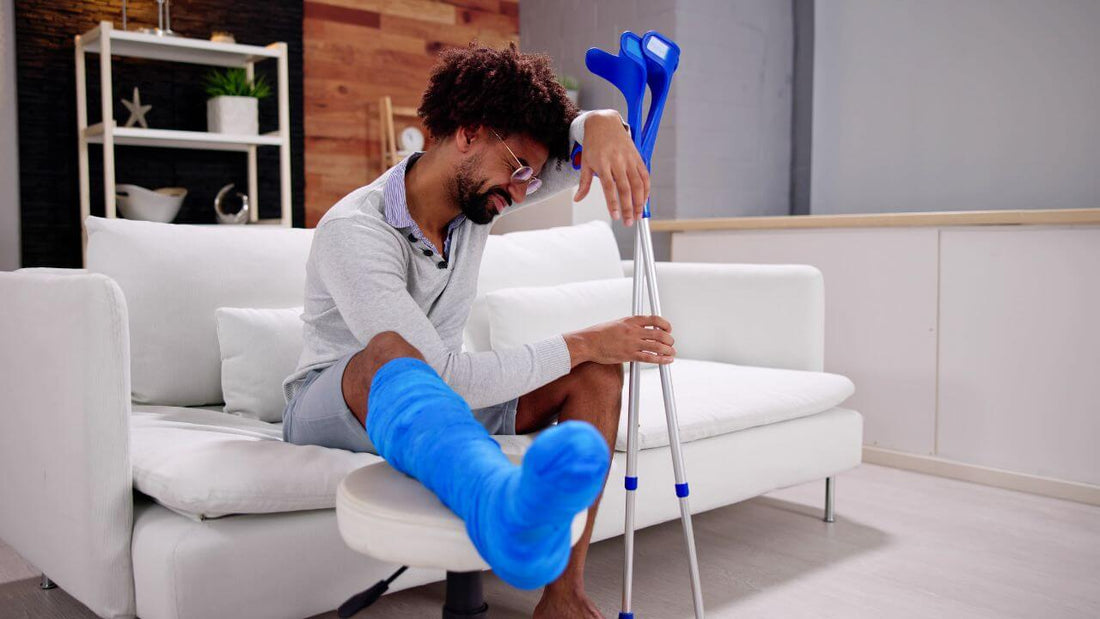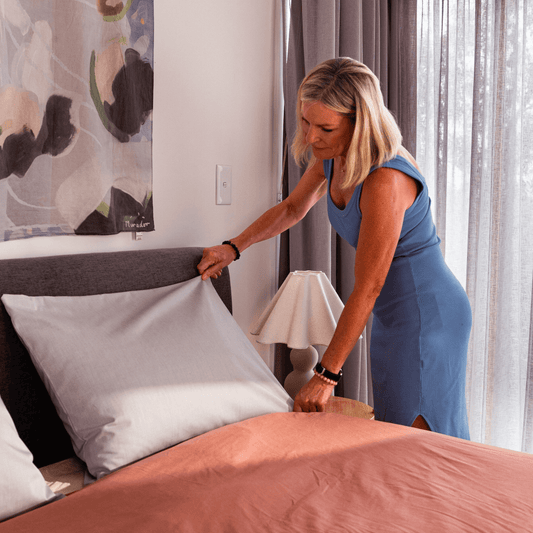
Recovery Earth: Using Grounding to Aid Healing After Surgery
Denzel SueltoIs grounding beneficial after surgery?
Yes, grounding appears to support post-surgical healing by reducing inflammation, easing pain, and promoting faster recovery.
Recent studies suggest that connecting to the Earth through grounding may help the body recover more efficiently after surgical procedures.
Why Post-Surgery Recovery Matters
Surgery places significant stress on the body. After an operation, patients often experience pain, swelling, and inflammation as the body works to heal.
Managing these symptoms is key to a smooth recovery. Traditional approaches include medication, rest, and physical therapy. Grounding, also called earthing, is now being studied as a complementary option that may support these standard treatments.
Recovery is not only about physical healing but also about restoring energy levels, improving sleep, and lowering stress. Each of these areas can influence how quickly a patient regains normal function.
When patients face slow healing, they may deal with complications such as infections, scar tissue problems, or extended hospital stays. This is why exploring safe complementary approaches like grounding has gained attention.
How Does Grounding Help After Surgery?
Grounding involves direct physical contact with the Earth’s surface, usually through barefoot walking or using grounding mats and sheets indoors. When the body connects to the Earth, it absorbs free electrons that may act as natural antioxidants. These electrons help neutralize free radicals, which are linked to inflammation and tissue damage.
Research has shown that grounding can influence biological processes in ways that are especially relevant for recovery after surgery:
- Reduces inflammation: By lowering free radical activity, grounding helps reduce swelling and heat in tissues.
- Relieves pain: Patients report less discomfort and stress when grounded.
- Supports better circulation: Improved blood flow may speed up tissue repair.
- Balances stress hormones: Grounding normalizes cortisol levels, which may help the body maintain healthier rhythms during recovery.
- Promotes relaxation: The calming effect of grounding may reduce anxiety, which is often heightened after surgery.
Evidence from Clinical Studies
One of the most important studies on grounding and surgery recovery focused on spinal surgery patients. Researchers compared patients who were grounded to those who were not. The results showed significant differences:
| Study | Participants | Grounding Method | Key Results | What It Means |
|---|---|---|---|---|
| Earthing and post-surgery recovery (2015) | Patients recovering from spinal surgery | Conductive grounding patches and sheets | Grounded patients had greater pain reduction, lower inflammatory markers (C-reactive protein), and faster recovery | Grounding may help reduce pain and inflammation, supporting quicker healing |
Other research also supports grounding’s role in healing:
- Grounding has been linked to improved sleep quality, which is essential for healing.
- Studies show a reduction in stress, anxiety, and muscle tension after grounding sessions.
- Wound-healing studies indicate that tissues repair faster when inflammation is reduced.
- Laboratory research suggests that earthing may help stabilize heart rate variability, which supports overall resilience during recovery.
Is Grounding Safe After Surgery?
Yes, grounding is generally safe for most people after surgery. However, it’s important to follow medical advice and ensure any surgical wounds are kept clean. Indoor grounding tools such as grounding mats or sheets can be a practical and hygienic option during recovery. These allow patients to benefit from earthing without needing to go outdoors.
For patients with mobility limitations, indoor grounding is especially valuable because it can be done without leaving bed or while seated. This makes it easy to integrate grounding into daily rest routines during recovery.
Similar to post-surgical healing, grounding is also being explored for postpartum recovery, where easing inflammation, reducing pain, and supporting better sleep are equally important. This suggests grounding may be a versatile option for different kinds of recovery periods.
How to Use Grounding During Recovery
- Start with rest-based grounding: Use a grounding mat or sheet while sitting or sleeping.
- Incorporate short sessions: Even 30–60 minutes of grounding daily may support recovery.
- Use during relaxation: Combine grounding with breathing exercises or meditation to maximize stress relief.
- Combine with medical care: Grounding should complement, not replace, prescribed treatments.
- Prioritize comfort and safety: Avoid outdoor grounding until surgical wounds are healed and mobility improves.
- Stay consistent: Regular grounding, even in small sessions, may produce cumulative benefits over time.
Broader Implications for Healing
Grounding is not only useful after surgery but may also benefit people managing chronic conditions or recovering from injuries. Its ability to reduce inflammation and improve sleep extends to many aspects of health.
The same processes that support wound repair after surgery may also help conditions such as arthritis, cardiovascular recovery, and stress-related illnesses. This makes grounding an accessible, low-cost approach that can fit into long-term wellness routines.
Conclusion
Grounding provides a simple, natural way to support recovery after surgery. Evidence suggests that it helps reduce inflammation, lower pain levels, and improve overall healing outcomes. By improving sleep, reducing stress, and promoting circulation, grounding supports the body in multiple ways during the delicate post-surgical phase.
While more research is needed, grounding can be a safe, supportive practice when combined with conventional post-surgical care. By reconnecting with the Earth, patients may find a gentle aid to make the recovery journey smoother and more comfortable.
References
- Chevalier, G., Sinatra, S. T., Oschman, J. L., & Delany, R. M. (2015). Earthing: Health implications of reconnecting the human body to the Earth's surface electrons. Journal of Inflammation Research, 8, 83–96. https://doi.org/10.2147/JIR.S69656
- Sokal, K., & Sokal, P. (2011). Earthing the human body influences physiologic processes. Journal of Alternative and Complementary Medicine, 17(4), 301–308. https://doi.org/10.1089/acm.2010.0687
- Chevalier, G., Mori, K., & Oschman, J. L. (2013). The effect of grounding the human body on mood. Psychological Reports, 116(2), 534–542. https://doi.org/10.2466/06.PR0.116k21w5










